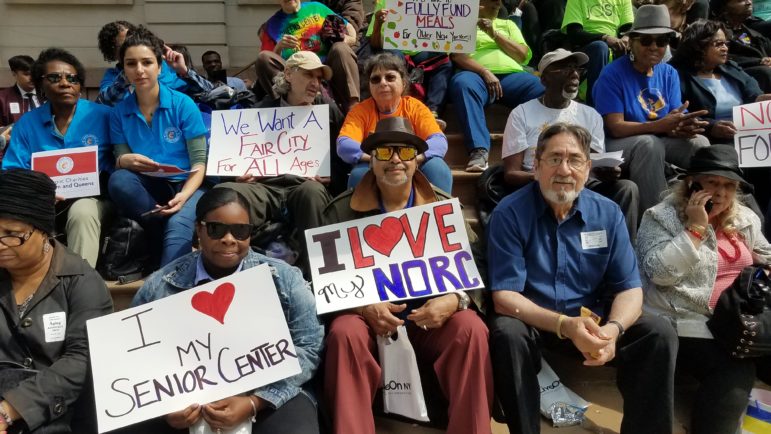It’s hard to predict how the city will change under the next mayor. One near certainty is that the aging of the city’s population will create policy opportunities and challenges.

Jarrett Murphy
A 2019 rally for senior meals funding at City Hall.It is too early to say how much the COVID-19 pandemic will alter the speed or course of all the trends New Yorkers have grown used to, like falling crime, a swelling population, rising rents and the greying of the population.
A 2010 estimate had the city’s 65-and-older population growing by 400,000 people, or 40 percent, by 2040. That’s about four times faster than the city’s overall population was expected to grow. Nearly half of that growth was projected to occur between 2020 and 2030.
With that growth would come challenges and opportunities in many spheres of urban life: housing, employment, healthcare, social services, education, public safety, transit and more.
Even before COVID-19 hit, there were signs that the city’s population growth was reversing. The pandemic has amplified the outflow. It is uncertain what the long-term demographic impact of these population changes will be.
In other words, the “graying” of the city might occur at a different pace, and that could have policy implications, too.
To understand how candidates for mayor size up and plan to address the issues facing aging New Yorkers, LiveOn and City Limits are sponsoring a non-partisan mayoral forum on Wednesday, April 14, from 9:30 to 11:00 a.m.
Register for the event here.
For more information on the mayoral race and the other contests that will shape city government from 2022 on, check out our Election 2021 page.








